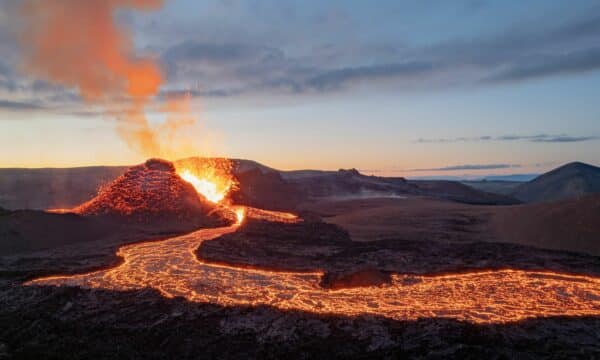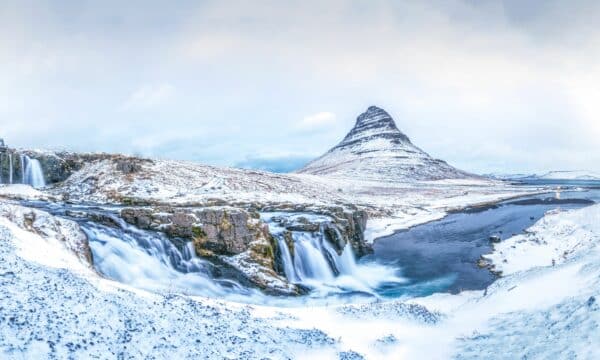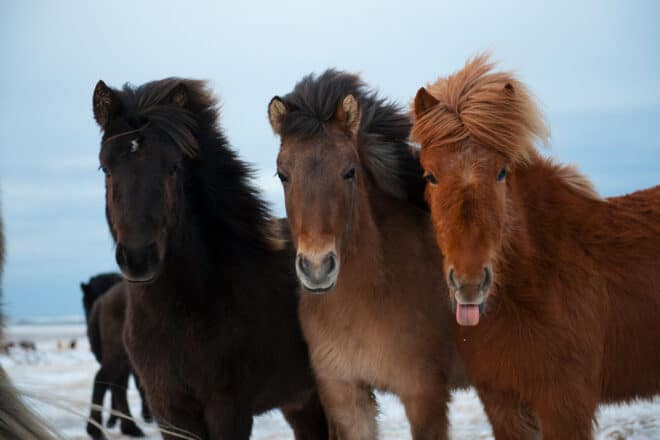
Icelandic horses have a unique history that has shaped both their character and this country. Initially, they were brought here by Vikings who travelled the world in search of adventure and fortune. However, the horse’s ability to adapt to harsh conditions not only made them ideal for travel and exploration but also for building up a society on this volcanic island in the North Atlantic.
But what exactly makes Icelandic horses unique? What are their characteristics? And how did they become such a famous breed?
Let’s take a closer look.
Horses in Iceland – History
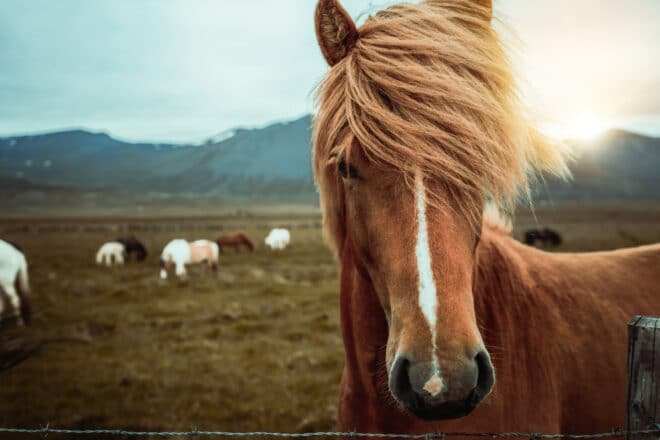
Icelanders often said the horse stayed with them from the cradle to the grave. It was a horse that would bring the midwife to a mother giving birth, and it was a horse that would pull a coffin to church. This is why Icelanders, still to this day, call horses “the most needed servant”.
Horses, Vikings & Mythology
Icelandic horses have been in Iceland for almost as long as humans. They arrived with early Viking settlers in the 9th and 10th Centuries. And, of course, the Vikings brought only the best and strongest horses with them.
The Vikings valued these horses, which were a vital part of their war success. So much so that a good horse was often buried with his owner. They were also status symbols, and giving someone a horse was considered a great sign of respect, usually reserved for leaders and kings.

There are numerous accounts in the Icelandic Sagas of horses, and they played a vital part in some of the best-known ones, including Njál’s Saga, Hrafnkell’s Saga, and Grettir’s Saga. The earliest named horse is a mare called Skálm from the Book of Settlements, written in the 12th Century.
There are even more mentions of horses in Norse mythology. For example, the horses Skinfaxi and Hrímfaxi (translation: Shiny Mane and Frost Mane) are said to bring the day and night, respectively. And the Norse god, Odin, rode an eight-legged horse called Sleipnir.
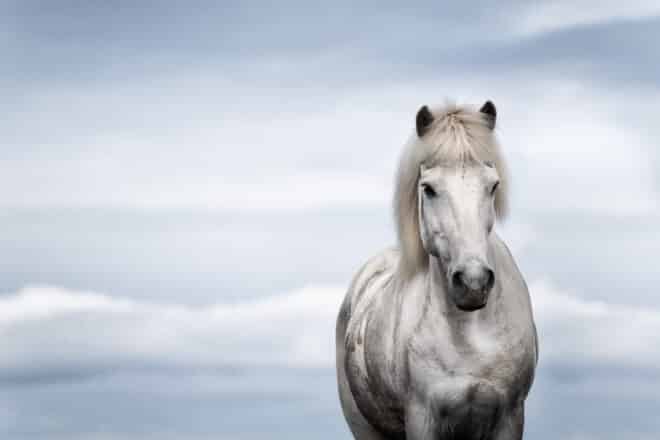
The Icelandic parliament, Alþingi, was established in 930 AD. Some of the first laws the settlers established involved horses. If a person rode another person’s horse, they would be subject to a temporary exile. But if a person rode another person’s horse between districts, they could be sentenced to a lifelong exile.
Modern Life & Horses
Horses were indispensable when it came to building up the country. Icelanders used them for carrying hay, fish and other products between farms and harbours, as well as rounding-up sheep.
For centuries, horses were also the only means of transportation in Iceland. Horse carts arrived in this country much later than anywhere else in Europe. This was due to Iceland’s rough terrain and the animals’ strength.
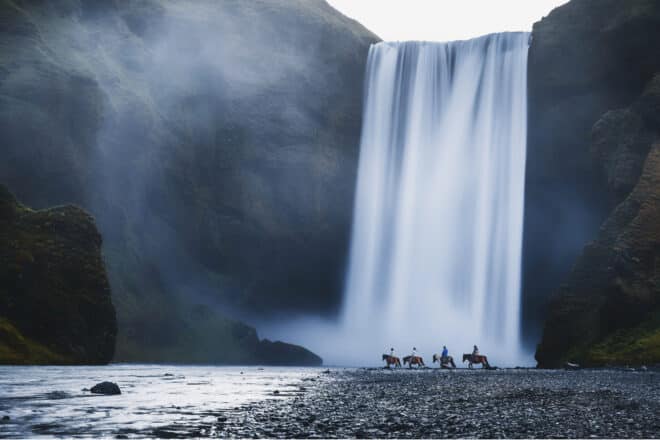
The arrival of cars in the 20th Century almost eliminated the use of horses. But not completely; they are still used for traditional sheep herding.
In the spring, sheep roam freely around the countryside. In the autumn, farmers then spend days searching for them to gather them inside before the first snow comes. For mountainous regions, like the Westfjords of Iceland, a farmer needs a good horse to reach places an ATV bike, for instance, couldn’t go.
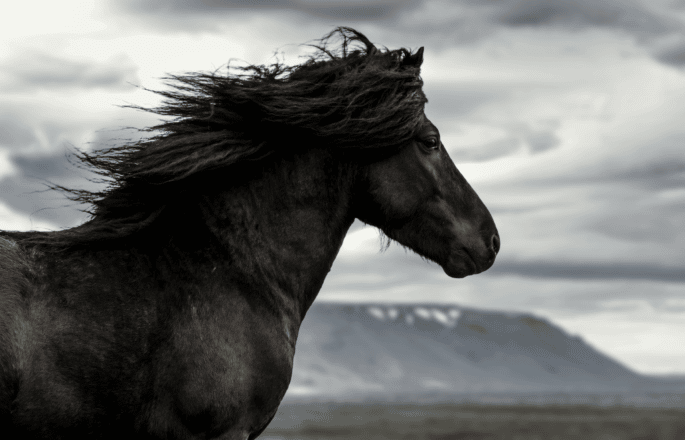
On your travels around Iceland, you might see a herd, and you wouldn’t be at fault for thinking these are wild horses. Some horses, like the sheep, spend their days roaming freely around the countryside and are collected in the autumn and brought back to their horse farms.
Furthermore, leisure riding and horse racing are popular activities in Iceland. The National Competition of Horsemen, an annual horse show and competition, has been held since 1950 and is now the largest outdoor sporting event in the country.
Why are Icelandic Horses so Small?
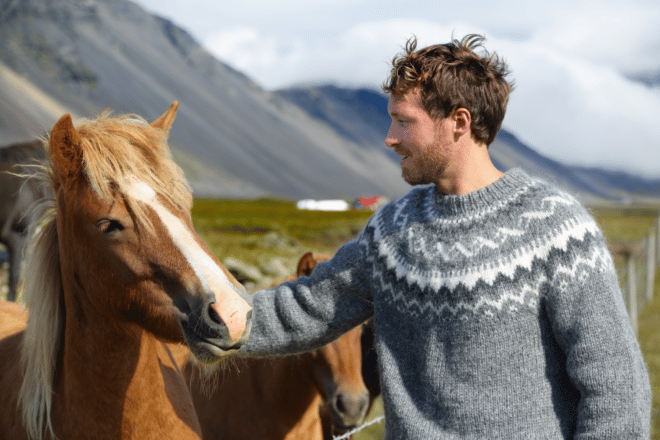
For over a thousand years, the horses Vikings brought have lived in this country in isolation, without crossbreeding. This means that the Icelandic horse is one of the purest horse breeds in the world.
In the early days of Iceland, the weather was much milder, allowing Icelandic horse breeders to breed horses selectively. They would choose certain traits, such as size, shape, height, and coat colours, over others. As a result, the Icelandic horse now has over 40 base colours and over 100 colour variations. In fact, you can now find almost all known horse colours within this breed.
However, after 1300 AD, the climate became much harsher, and many animals perished because of hunger and lack of shelter. Things took a turn for the worse between 1783 and 1784, when a volcanic eruption in the craters of Laki caused famine and mass deaths among people and livestock, thereby contributing to the decline of the Icelandic horse population.
These environmental factors resulted in the breed developing specific characteristics. Those include resistance to cold from a thick double-layered winter coat, an ability to store and collect nutrients and vitamins from the summer feed, and a small size.
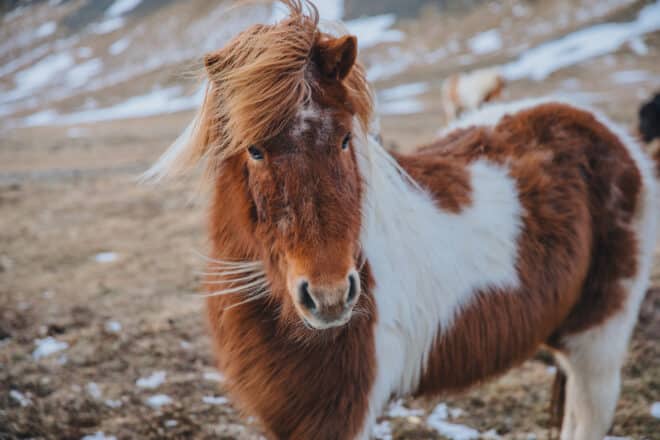
Living on the edge of a livable horse habitat has made the Icelandic horse pony-sized. However, these animals are not characterised as ponies, although they stand at an average of 132-142 cm (52-56 inches), which is below the standard definition of pony size.
The reason the Icelandic horse is a horse and not a pony is unknown. Some say it is because of the horse’s weight, bone structure and weight-carrying abilities. Others say it’s because of its spirited temperament.
Icelandic horses have no natural enemies, so they are typically very friendly, curious and highly intelligent. Making them great companions for new and experienced riders.
The 5 Gaits of the Icelandic Horse
Aside from spirited temperament, ability to survive in a harsh climate, strength, and small size, the Icelandic horse is known for performing five different gaits. Most horses know how to walk, trot, and canter or gallop. However, Icelandic horses can perform two extra gaits, tölt and flugskeið or “flying pace”.
Tölt is a four-beat lateral ambling gait.That means the horse always has one or two feet touching the ground at equal intervals. The horse’s weight is on the rear legs, allowing the front legs to be freer and lighter, resulting in a smooth ride. So much so that horse owners often show off their steed’s tölt by holding a full glass without spilling while riding.
The second additional gait is flugskeið or “flying pace”, which locals often nickname “the fifth gear”. As the name suggests, it is very fast, and some horses can reach up to 48 km/h or 30 miles per hour on it. It looks as if the horses glide through the air when they perform this two-beat lateral gait where the front and back legs on the same site move simultaneously.
Where to Meet Icelandic Horses
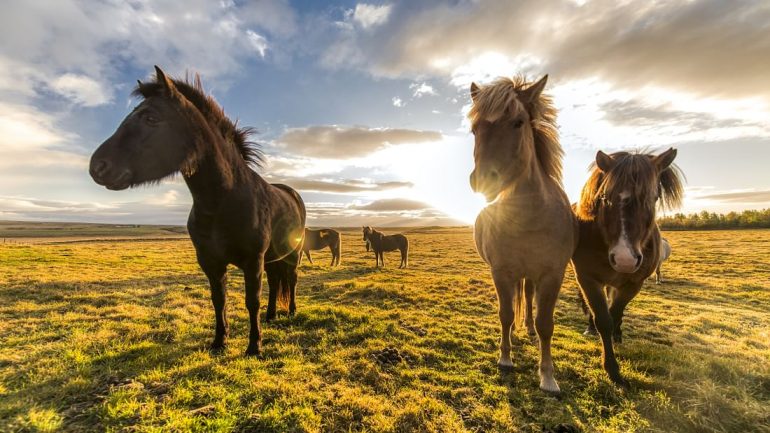
You will undoubtedly see many horses in the wild on your road trip around the country. It is not uncommon for visitors to stop and take pictures with the horses. However, it would be best if you kept a few things in mind for your and the animal’s safety.
First, do not feed the horses, as it could upset their stomachs and make them very sick. Second, do not enter onto private property. Lastly, if you are driving, make sure you pull over safely. Do not stop suddenly; ensure you park in a secure spot where other drivers can see you and won’t have to slow down to pass you.
The safest and best way to see Icelandic horses is on a horse riding tour.
Top Horse Riding Tours in Iceland
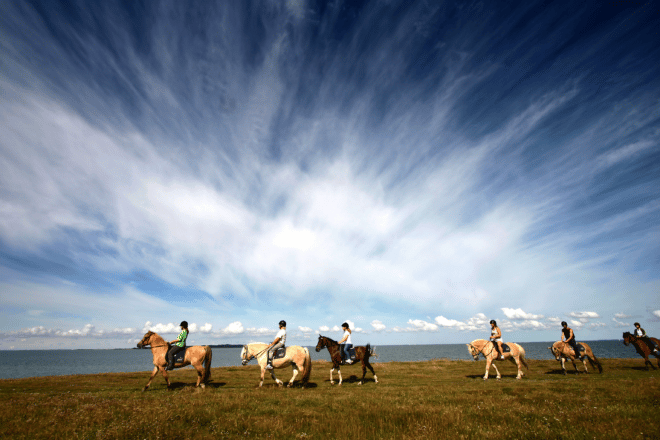
Horse riding tours are a popular activity in Iceland. And there are several places you can go on horseback throughout the country. Here are some of the top ones:
Classic Horse Riding Tour Near Reykjavik
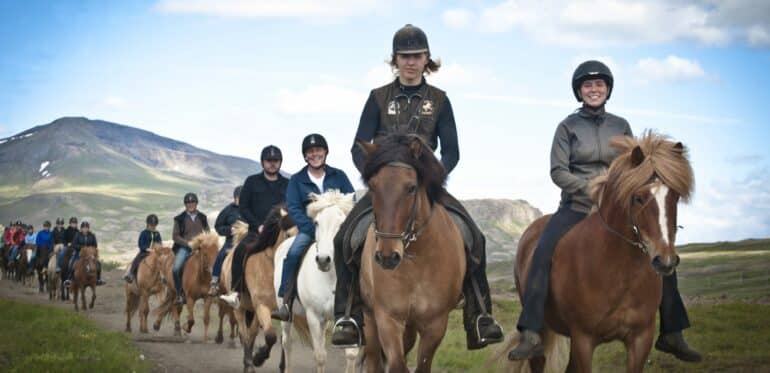
Midway between Reykjavík City and Þingvellir National Park is an established horse farm where you can go on riding tours. The farm’s location makes it a fantastic option for those either on their way to or heading back from exploring the Golden Circle.
Find it here: Horse Riding Tour near Reykjavík – Great For Those Visiting Golden Circle
If you want a more private experience, you can also book a Private Horse Riding Tour here.
Horse Riding & Hot Spring Bathing
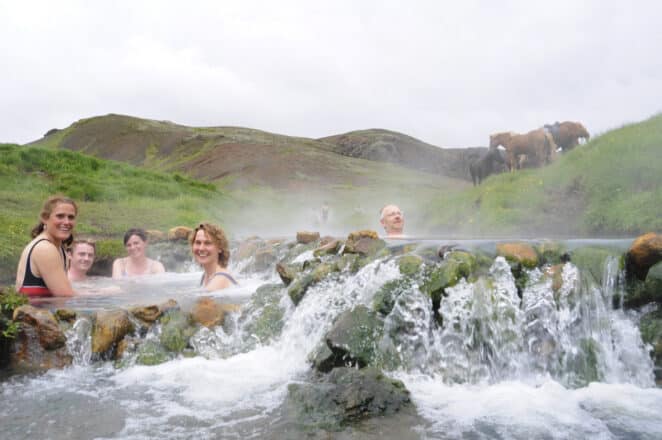
What is better than spending a day riding a horse through Icelandic nature? The answer is relaxing in a geothermal river afterwards.
This fantastic tour will take you on horseback around the countryside around Hveragerði Town. You will ride up and down mountains before making your way to a warm geothermal river for a nice, relaxing soak.
Find the tour here: Horse Riding and Hot Spring Bathing Tour from Reykjavik
Horse Riding on a Black Sand Beach
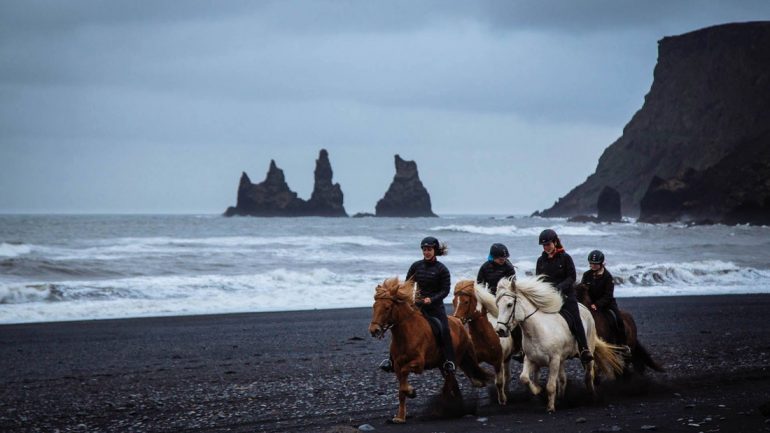
If you are travelling near Vík in South Iceland and want a unique riding experience, then this is the tour for you.
Accompanied by a guide, you’ll ride across a black sand beach and maybe across streams from a glacial river.
Find it here: Horse Riding Tour on a Black Sand Beach in South Iceland
Horse Riding & Whale Watching
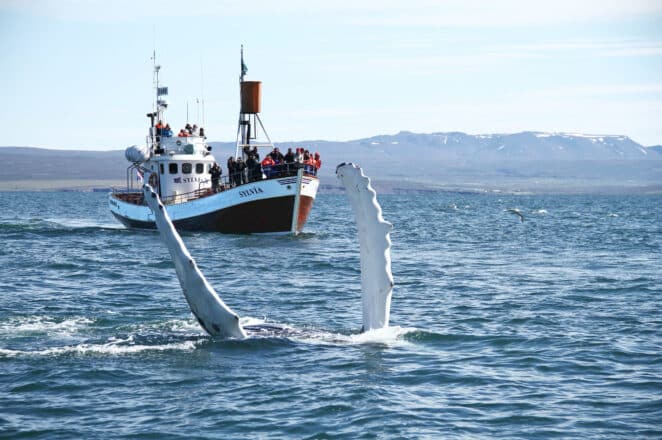
This is the tour for animal lovers! You’ll start the day by going whale watching followed by a horse riding tour along the shores of North Iceland’s Eyjafjörður Fjord.
It’s a fantastic opportunity for anyone looking to get to know these magnificent animals better.
Read more about the tour here: Whale Watching & Horse Riding Tour from Husavik in North Iceland
8-Day Horse Riding & Sheep Gathering Tour
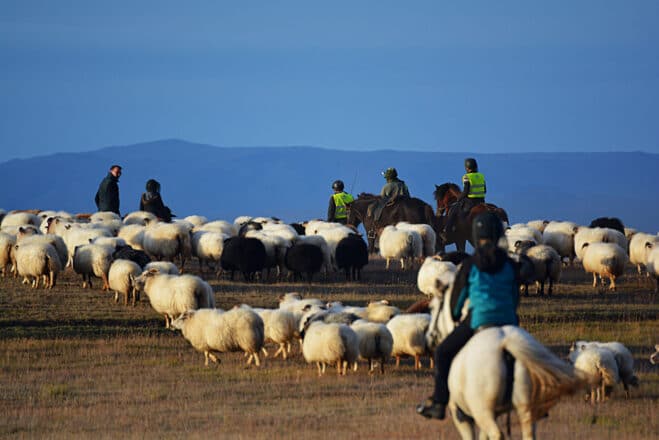
This tour offers visitors the rare chance to experience the ancient tradition of Réttir sheep and horse herding.
You’ll spend 8 days travelling around Iceland, riding horses, gathering sheep, and seeing stunning Icelandic nature.
See more here: 8-Day Horse & Sheep Gathering Tour in Iceland | Highlands, Golden Circle, Snæfellsnes Peninsula & Whale Watching
Are Icelandic Horse Riding Tours Safe for Beginners?
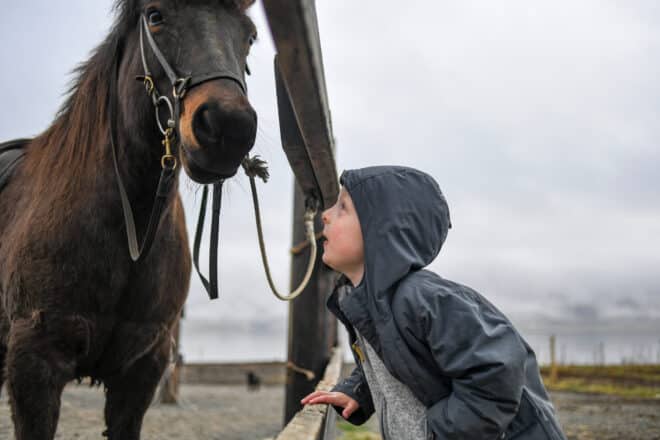
Due to their small size, friendly attitude, and gentle temperament, Icelandic horses are great for beginners. In fact, most horse riding tours are made with new riders in mind. The guide usually begins by teaching horse riding basics before you can explore the countryside.
Horse riding is also a family-friendly activity; the minimum age for most tours is 7-10 years old.
What to Wear for Horse Riding in Iceland
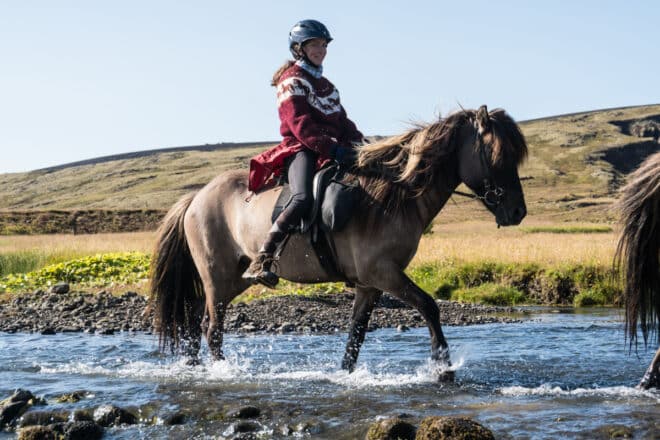
Included in horse riding tours is the use of all gear, such as saddle, reins, and a helmet. Most will also offer you warm overalls in the winter or rain gear in the summer. Some even have boots for you.
However, there are a few things you should wear when on a horse riding tour in Iceland:
- Warm inner layer of clothes
- Good ankle boots or boots
- Comfortable trousers
- Warm and waterproof outer layer
- Gloves & a thin hat to wear under your helmet
- A small waist bag for personal items. Backpacks are not allowed
- Extra pair of clothes and socks on rainy days, as a precaution
What is so Special about Icelandic Horses?
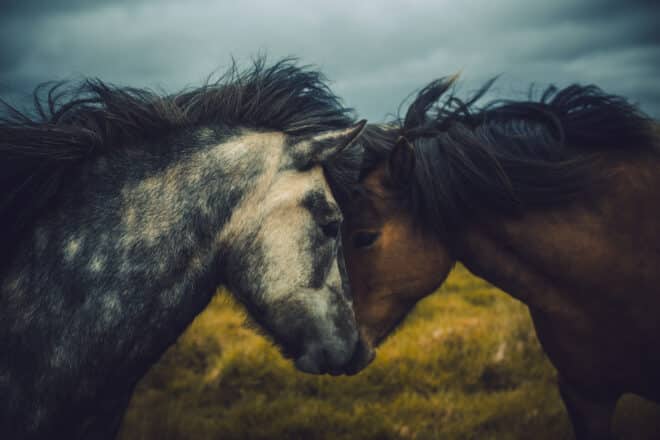
So, what is it that makes Icelandic horses so unique? Here are eight reasons why.
- They are hard-working and have helped build the country since the times of the Vikings.
- Icelanders still consider the horse an essential part of farm life, especially sheep herding.
- Icelandic horses are one of the purest horse breeds in the world, having had no cross-breeding for 1000 years.
- Throughout the years, they have developed a thick coat that protects them from the cold winters of Iceland.
- Though small, Icelandic horses are not classified as ponies and are pretty strong for their size.
- Icelandic horses come in a variety of colours. You can find all known horse colours within the breed with a few exceptions.
- Unlike other breeds, Icelandic horses have five separate gaits.
- Icelandic horses are friendly and intelligent, making them an excellent choice for new riders.

